The chick of the Oriental White-eye (Zosterops palpebrosus) is hatched blind and naked (top left). The natal downs or down feathers that usually cover chicks at hatching are generally absent here, as in most passerines. Traces of these downs can still be seen around the head as isolated tufts of light green (top right, arrow). The absence of natal downs allows the parents to warm the chick more efficiently, than through an intervening layer of feathers. Not wasting energy producing these natal downs would also allows the chick to develop more quickly.
The chick is not naked for long. By the next day traces of emerging pin feathers become apparent along certain defined tracts on the body (above middle). These black, pencil-like structures elongate (below left) and the developing feathers enclosed within the sheath breaks out eventually, to emerge as juvenal feathers (below right). These juvenal feathers are light green and branched.
According to our field ornithologist Wang Luan Keng, the green juvenal feathers (below) are of poor quality: “The bird will change into its first year plumage after it is out of the nest. They look branched because it is poor quality (meaning the barbs are loose, the vane incomplete). This is a strategy for growing quickly but they are poor quality, meaning they do not afford much insulation and must be changed into better quality plumage.
“We know very little about feathers, really. Very few documentations are available. Any bird is capable of growing low quality feathers. Most try not to. In nestlings, it is a strategy in response to environmental factors, a life history trade-off – to grow quickly and get out of the nest and be independent. In adult birds, we sometimes see fault lines, especially in the flight feathers (both wing and tail). It is due to feather growing in poor environmental conditions (which means low nutrition, which means poor feather growth).
“Birds usually grow their feathers very slowly, about 2-6 mm a day. This is because feather growth is very energy demanding. In unfavourable environmental conditions (even for a day), birds can still achieve the same amount of feather growth but the new part of feather grown is much thinner (fewer/looser barbs). When the feather is completed, the thinner part of the feather shows up clearly as a “fault line”.
For nestlings, we have very little baseline studies on how fast the feather grows. If we have the photos of the white eye nestlings in last June, Jan and this March (1, 2), and all taken on Day 7 (this is the day the Jan clutch left the nest – the earliest so far), we can enlarge the feather and see if the Jan clutch indeed grow much faster by growing poor quality feather).
Fascinating isn’t it?”
Yes, it is fascinating and we know so little about it. But with the cooperation of photographers documenting chick development, as in the case of the white-eyes, we are slowly accumulating information on feather development in chicks. The image above shows a chick with its juvenal plumage all developed and allready to fledge within a few days’ time.
Images by Chan Yoke Meng except second from bottom by KC Tsang.


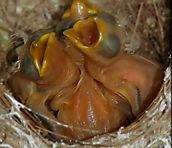
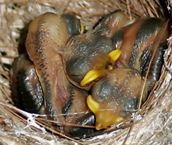
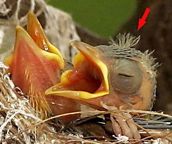
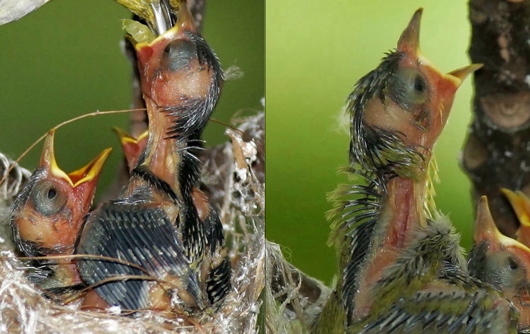
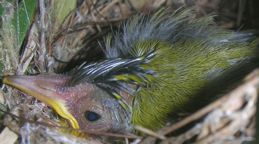
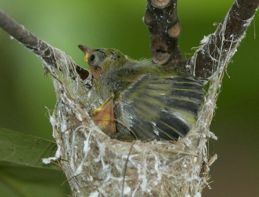







2 Responses